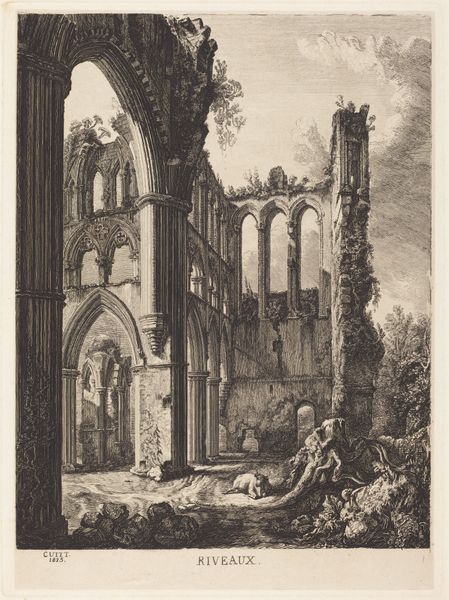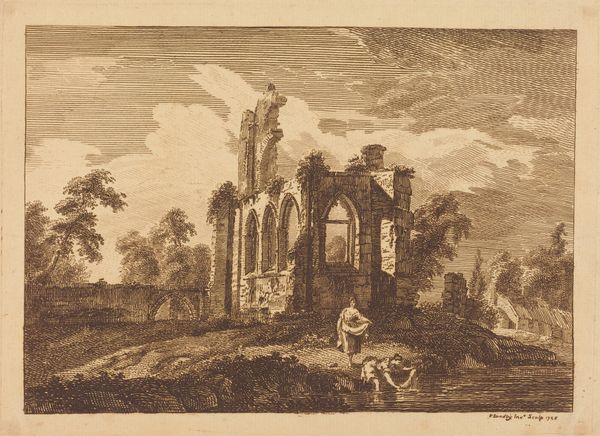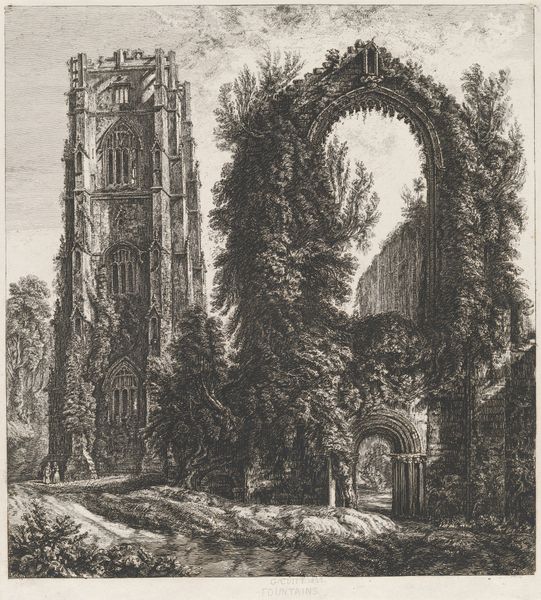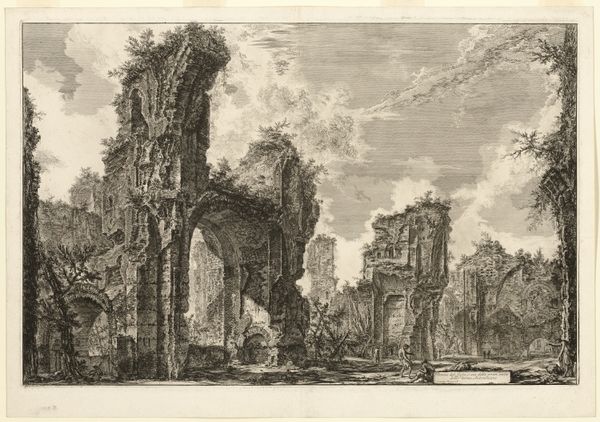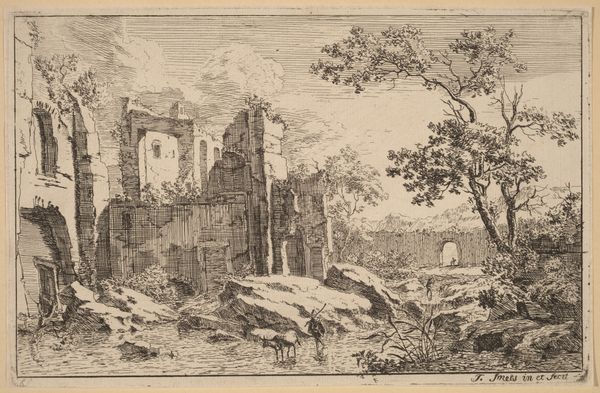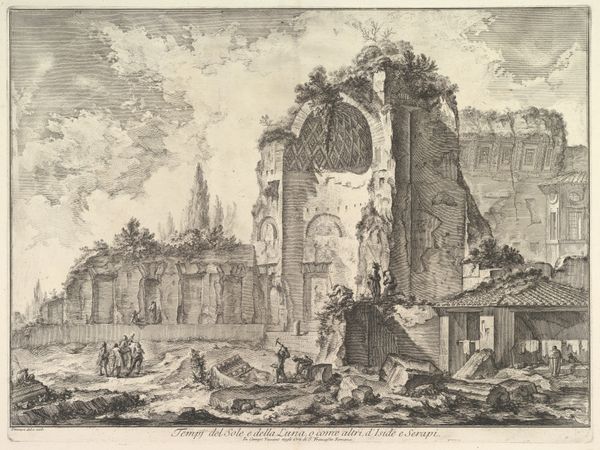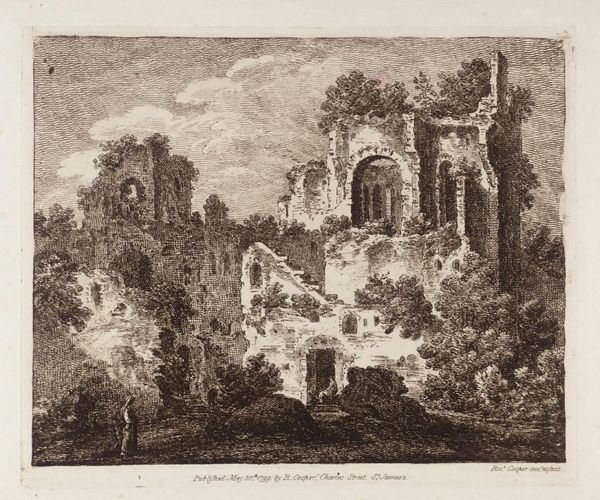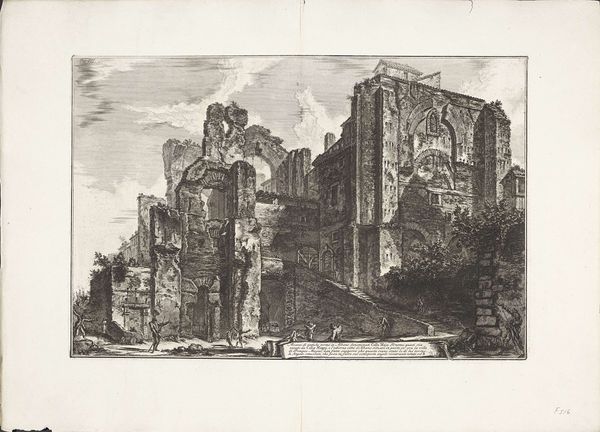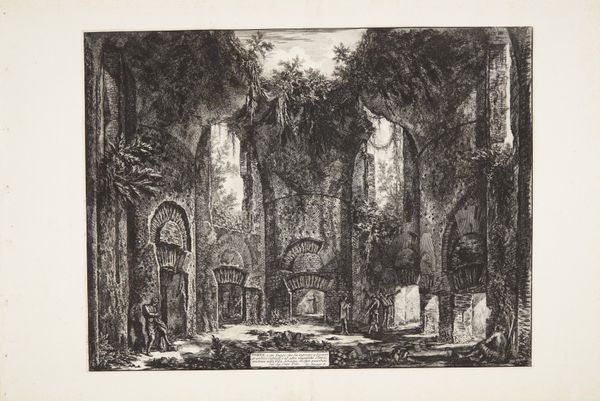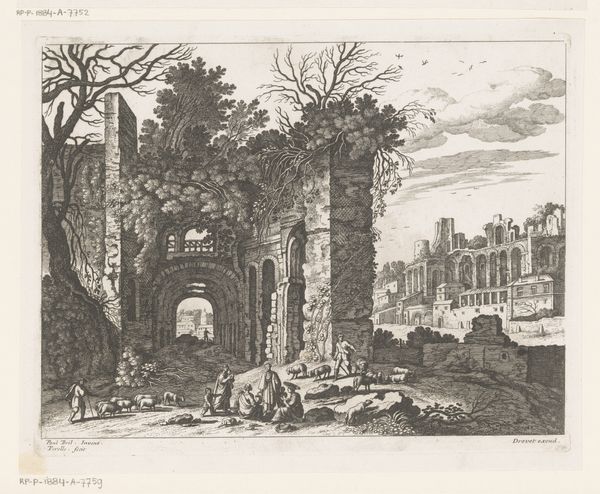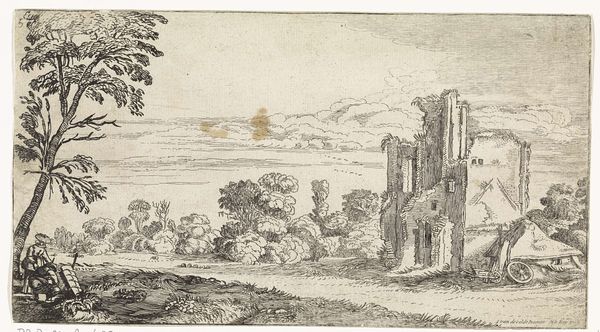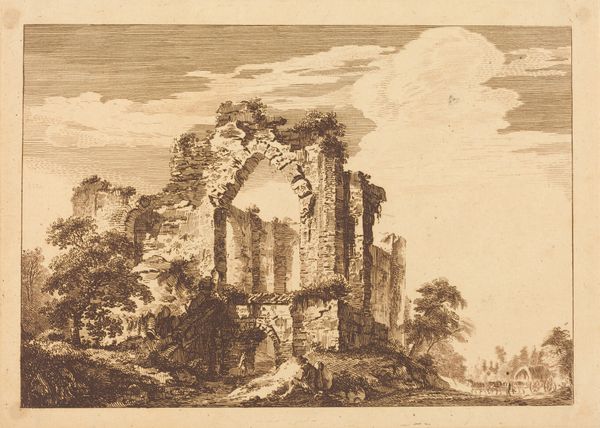
print, etching
# print
#
etching
#
landscape
#
romanticism
#
cityscape
#
history-painting
Copyright: National Gallery of Art: CC0 1.0
Curator: This is "Riveaux," an etching by George Cuitt the Younger, created in 1824. Editor: What strikes me immediately is the romantic decay; there's a haunting, melancholic quality in how the ruin is depicted, nature reclaiming what was once so deliberately built. Curator: Indeed. Cuitt was known for his detailed studies of medieval architecture. Consider the labor involved in both the original construction and the etching process itself. He carefully documents the textures of the stone, overgrown with foliage; this must have been incredibly time-consuming. The lines, creating light and shadow, feel meticulous. Editor: Absolutely. And think about the socio-political implications of ruin imagery in the Romantic era. These kinds of depictions were popular because they spoke to the instability and the decline of empires, reflecting anxieties about progress and societal change. Who was consuming this kind of image, and what were they thinking about while doing so? The sublime power of nature is on full display here. Curator: Also consider the marketplace. Etchings were relatively affordable, making architectural documentation accessible to a growing middle class. Cuitt wasn't just an artist; he was running a small printmaking business, responding to a specific demand. The social status of the arts changes so drastically during the early nineteenth century, and how the medium facilitates accessibility of arts matters a lot for that change. Editor: Yes, that availability definitely democratized architectural imagery. Furthermore, you see this ongoing fascination with the past used to comment on present realities; "Riveaux" then functions as an argument, even a critique, using aesthetics rather than polemics. Think about what these kinds of images excluded, though; representations of labor and rural poverty were largely absent, masking harsh social realities behind this facade of beautiful decay. Curator: That’s a potent point; it certainly elevates aesthetic contemplation over, say, material considerations of social struggle. The emphasis then shifts from the hands that made the structure or whose labor paid for Cuitt's leisure and time, and to those leisurely who contemplates the result. Editor: Precisely. I find the piece a reminder of the complex ways art both reflects and actively shapes our understanding of history. Curator: Agreed; and Cuitt’s "Riveaux," viewed through these layers of creation, consumption, and context, certainly tells a far more nuanced story than simply aesthetic appreciation.
Comments
No comments
Be the first to comment and join the conversation on the ultimate creative platform.
